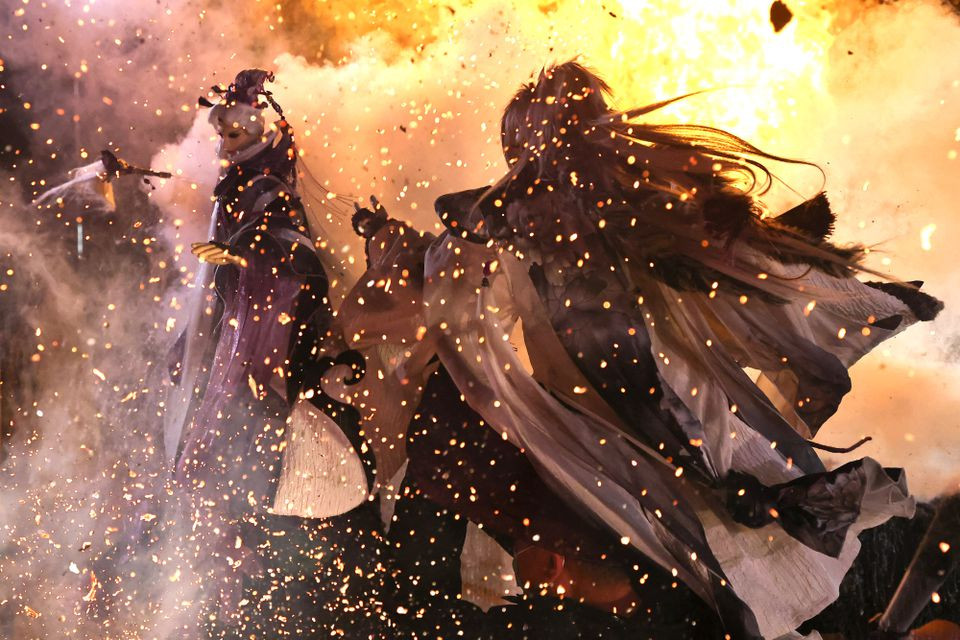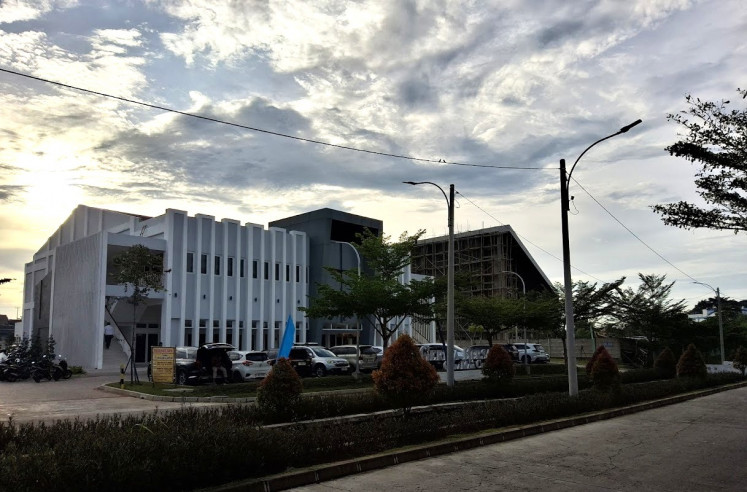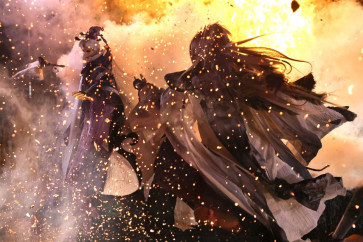Popular Reads
Top Results
Can't find what you're looking for?
View all search resultsPopular Reads
Top Results
Can't find what you're looking for?
View all search resultsHow NFT liberates ordinary artists
NFT is a global marketplace where artists (and all creators) can make an entry without being “desk rejected” for unfair or unscrupulous reasons.
Change text size
Gift Premium Articles
to Anyone
 Superhero puppets: Two puppet characters battle each other in a scene that uses real fire as a special effect on Feb. 18, during a demonstration at the filming studio of Pili International Multimedia 8450.TWO in Yunlin, Taiwan. Pili has turned to non-fungible tokens (NFTs) to generate new revenue while keeping the traditional glove puppets of Taiwanese culture relevant among today’s audience. (Reuters/Ann Wang)
Superhero puppets: Two puppet characters battle each other in a scene that uses real fire as a special effect on Feb. 18, during a demonstration at the filming studio of Pili International Multimedia 8450.TWO in Yunlin, Taiwan. Pili has turned to non-fungible tokens (NFTs) to generate new revenue while keeping the traditional glove puppets of Taiwanese culture relevant among today’s audience. (Reuters/Ann Wang)
“If you don’t have NFTs [non-fungible tokens], you don’t exist” has been a hotly debated idea among experts and creators in the last year. With a market valuation at US$41 billion in 2021 according to Bloomberg, (the world of) NFT is a new elephant that is too big to ignore.
By all means, NFT is a hodgepodge of haven, trouble and opportunities: to make a quick fortune; to steal, cheat and escape; to make the world a better place. Is NFT all about doom and gloom? Can it enable positive change for artists, and if so, how?
Given the relative infancy of NFT, we have very little knowledge about what NFT affords to the world and in particular how they impact their first intended users: artists -- ordinary artists, to be specific. Artists often face hurdles on their paths and are disadvantaged by the “desk-reject culture” of gatekeepers.
Getting their first work sold is a top challenge. Being new, small, unknown or dubbed as “lacking legitimacy” is one issue, but at a deeper level there exist various types of discrimination -- gender, ethnicity, country of origin, age, to name a few -- that take away artists’ power to negotiate.
Not only is there a relatively unfair split of commission fees going to middlemen like galleries and centralized platforms, but also artists are merely rewarded with primary market sales. Why can’t artists receive as income a percentage of the sale each time their art is resold?
Artists also wonder why they can’t be compensated more fairly -- right now, while they are alive -- to enable them to make better artworks. Leonardo da Vinci’s greatest artworks -- those that made Europe famous -- were only possible thanks to funds that commissioned his works. NFT hence becomes artists’ savior, tackling their problems in several ways.
First, NFT exists in a global marketplace where artists (and all creators) can make an entry without being “desk rejected” for unfair or unscrupulous reasons. NFT gives every artist an equal opportunity to get listed in the markets (e.g., OpenSea, Objkt), which are akin to Amazon.com – except that an NFT artist owns most (e.g., 90 percent or more) of the income from a sale after deducting small “gas fees.” NFT markets boost the chance for artists and artworks of any types, styles and tastes to get discovered and sold. Since NFT clusters a large variety of collectors, investors and buyers, it enables “efficient matching” which inaugurates the first sale, subsequent learning benefits and reputation gain.


















